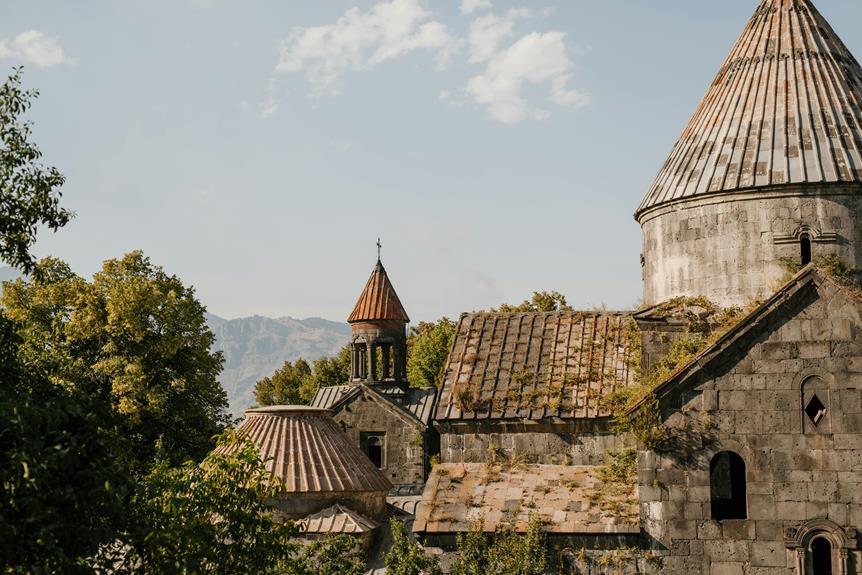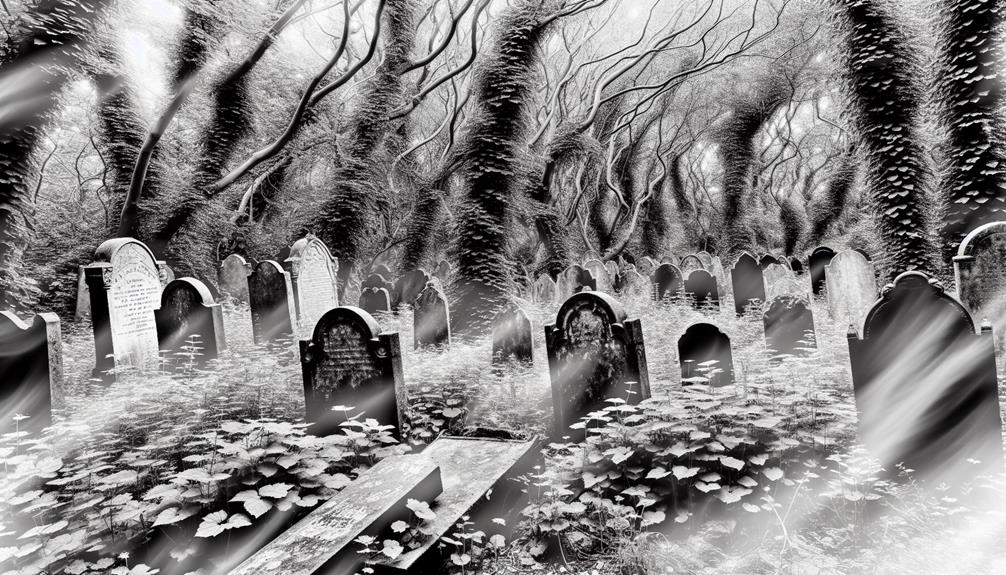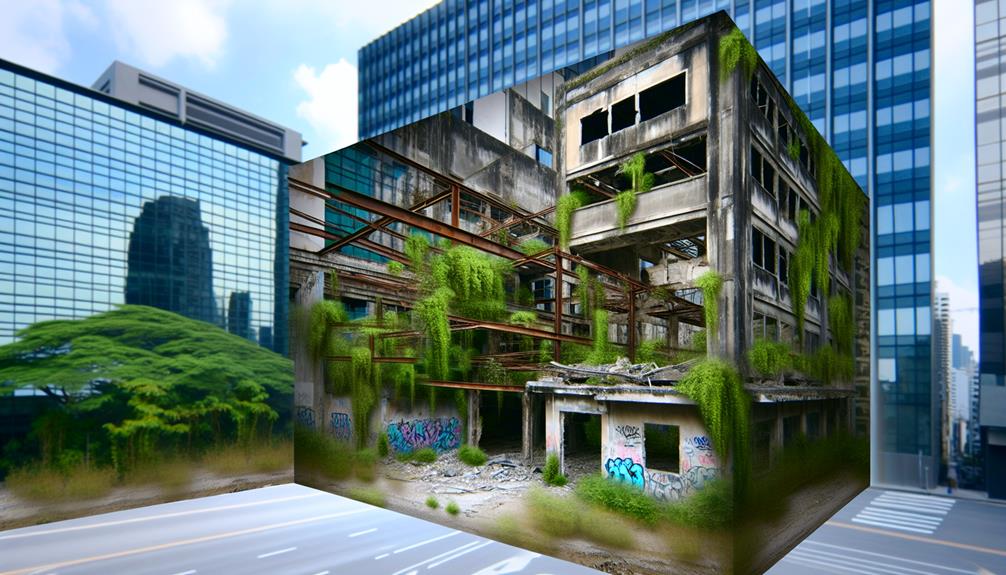In the quiet countryside of France lies a village frozen in time, bearing witness to a moment of unspeakable horror. Oradour-sur-Glane's streets whisper tales of a past marked by tragedy and loss, drawing visitors into a world where the echoes of history linger. As you walk through the remnants of a community shattered by violence, the question arises: How does one reconcile the weight of the past with the hope for a brighter future? The story of Oradour-sur-Glane invites contemplation on the complexities of memory, healing, and the enduring power of remembrance.
Key Takeaways
- Oradour-sur-Glane: Historic village in France.
- Tragic WWII massacre by Nazi SS: 642 killed.
- Village transformed into memorial site.
- Cultural revival: local artisans and cuisine.
- Visit for historical insight and reflection.
History of Oradour-sur-Glane
Oradour-sur-Glane, a small village in France, is known for the tragic events that unfolded during World War II, leaving a lasting impact on its history. The massacre survivors of Oradour-sur-Glane have played a pivotal role in preserving the memory and historical significance of the village.
The massacre survivors, who witnessed the horrors of June 10, 1944, when a German Waffen-SS company brutally killed 642 innocent men, women, and children, have since dedicated themselves to ensuring that the world never forgets the atrocities committed in Oradour-sur-Glane. Their testimonies have provided invaluable insights into the events leading up to the massacre and the aftermath that followed.
The historical significance of Oradour-sur-Glane lies in its transformation into a memorial site, a solemn reminder of the atrocities of war and a tribute to the lives lost on that fateful day. The preserved ruins of the village stand as a poignant symbol of remembrance, attracting visitors from around the world who seek to pay their respects and learn about the tragic history of Oradour-sur-Glane.
Through the efforts of massacre survivors and historians, Oradour-sur-Glane serves as a somber yet essential reminder of the consequences of war and the importance of preserving the memory of those who perished.
The Tragic Massacre
Revealing the harrowing events of June 10, 1944, sheds light on the tragic massacre that forever altered the course of history in Oradour-sur-Glane. On that fateful day, the Nazi SS brutally murdered 642 men, women, and children, leaving behind a scene of unimaginable horror. The aftermath of the massacre was devastating, with the village reduced to ashes and its inhabitants either killed or traumatized. The scars of this atrocity ran deep, not only in the physical destruction but also in the emotional wounds inflicted on the survivors and the collective memory of the community.
In the wake of the massacre, Oradour-sur-Glane faced the monumental task of healing and rebuilding. The process of community healing was long and arduous, marked by grief, anger, and a quest for justice. The survivors struggled to come to terms with the trauma they had endured, while the families of the victims sought solace and closure. Memorials and tributes were erected to honor the memory of those lost, ensuring that their stories would never be forgotten.
Despite the passage of time, the scars of the massacre remain etched in the collective memory of Oradour-sur-Glane. The community's resilience and determination to overcome the tragedy serve as a testimony to the human spirit's capacity for healing and renewal.
Oradour-sur-Glane Today
The present-day landscape of the village of Oradour-sur-Glane reflects a resilient community working towards remembrance and renewal after the tragic events of June 10, 1944. Despite the scars of the past, the village has emerged as a modern village that honors its history while embracing progress and growth.
Markdown List:
- Preservation Efforts: Oradour-sur-Glane stands as a proof of the preservation efforts undertaken by the community and the French government to make sure that the memory of the tragedy remains alive.
- Renewed Infrastructure: The village has seen a renewal in its infrastructure, with modern amenities and facilities that cater to both residents and visitors.
- Cultural Revival: Oradour-sur-Glane has experienced a cultural revival, with local artisans showcasing their crafts and traditions, adding vibrancy to the village.
- Local Cuisine: The village offers a taste of local cuisine, allowing visitors to savor traditional French dishes in a setting rich with history.
Today, Oradour-sur-Glane serves as a poignant reminder of the atrocities of war while also symbolizing the resilience of the human spirit. Visitors can explore the village, learn about its past, and witness firsthand the strength of a community that has chosen to honor its history while looking towards the future. The blend of remembrance, renewal, and the celebration of local culture and cuisine makes Oradour-sur-Glane a unique destination that pays homage to the past while embracing the present.
Memorializing the Victims
In the aftermath of the tragic events of June 10, 1944, the process of memorializing the victims of Oradour-sur-Glane has become a pivotal aspect of preserving the historical narrative and honoring the lives lost. The design of the memorial in Oradour-sur-Glane is a poignant reflection of the atrocities committed during World War II. The village was left in ruins as a symbol of remembrance, with buildings preserved in their destroyed state to serve as a poignant reminder of the horrors that took place on that fateful day.
Victim remembrance is a central theme in the memorialization efforts at Oradour-sur-Glane. The names of the deceased are inscribed on plaques, ensuring that each individual is recognized and honored for the life they lived. This personalized approach helps to humanize the tragedy, emphasizing the individual stories and experiences of those who lost their lives.
The memorial design also incorporates elements that encourage reflection and contemplation. Visitors are invited to walk through the village, experiencing firsthand the destruction and devastation wrought by war. This immersive experience fosters a deep sense of empathy and understanding, ensuring that the memory of the victims remains alive in the collective consciousness. In this way, the memorial at Oradour-sur-Glane serves as a powerful affirmation to the importance of preserving history and honoring those who perished in the pursuit of freedom.
Visiting Oradour-sur-Glane
An essential aspect of understanding the historical significance of Oradour-sur-Glane lies in experiencing the village firsthand through a visit. Here are four key aspects to keep in mind when planning a visit to Oradour-sur-Glane:
- Exploring ruins: Walking through the preserved ruins of Oradour-sur-Glane offers a haunting glimpse into the tragic events that unfolded during World War II. The abandoned buildings, charred remains, and silent streets serve as a poignant reminder of the village's dark past, allowing visitors to connect with history on a profound level.
- Guided tours: Opting for a guided tour can provide valuable insights into the events of June 10, 1944, when the village was destroyed. Knowledgeable guides offer context, historical background, and personal stories that help visitors grasp the full impact of the tragedy and the importance of honoring the memory of the victims.
- Memorial center: Visiting the Centre de la Mémoire d'Oradour allows visitors to explore further the history of the village and the experiences of its inhabitants. Interactive exhibits, archival materials, and multimedia presentations offer a detailed overview of the events leading up to the massacre, ensuring a thorough understanding of the site's significance.
- Local cuisine: After a somber visit to Oradour-sur-Glane, exploring the local cuisine can provide a sense of solace and connection to the present-day community. Sampling traditional dishes in nearby restaurants not only supports the local economy but also offers a taste of the region's culinary heritage, adding a touch of warmth to an otherwise emotionally intense experience.
Frequently Asked Questions
What Impact Did the Oradour-Sur-Glane Massacre Have on Nearby Communities?
The impact of the Oradour-sur-Glane massacre on nearby communities was profound, affecting intercommunity relations and impeding the healing process. Such traumatic events can create divisions and foster mistrust among communities, hindering efforts to come together and rebuild.
Overcoming the aftermath of such atrocities requires a concerted and sustained effort to address the emotional scars and work towards reconciliation to promote unity and understanding among affected communities.
Are There Any Surviving Witnesses or Descendants of the Victims?
The presence of surviving witnesses and descendants of victims is essential in preserving the memory of historical events. These individuals provide firsthand accounts and personal narratives that help shed light on the human impact of tragedies.
Understanding their experiences can offer valuable insights into the lasting effects of such events on individuals and communities. Their stories serve as a tribute to resilience and the importance of remembrance in honoring the past.
How Has the Local Government Supported the Oradour-Sur-Glane Memorial?
The local government's support for memorial sites is essential in preserving historical tragedies. Reconstruction efforts often require significant financial investments and ongoing maintenance to make sure the sites are properly maintained.
Government support can come in various forms, such as funding for restoration projects, providing resources for educational programs, and implementing policies to protect the site's integrity. These efforts help honor the memory of the victims and educate future generations about the importance of remembrance.
Are There Any Ongoing Efforts to Investigate the Massacre Further?
In examining ongoing efforts to investigate the massacre further, the current state of investigation progress is vital.
Understanding the historical significance of the event and its impact on the community can drive the need for continued research. By delving into new evidence or revisiting existing data, researchers and authorities can uncover additional insights that may shed light on unanswered questions surrounding the tragic incident.
Such efforts are essential for historical accuracy and justice.
What Psychological Support Is Available for Visitors Affected by the Site?
In providing psychological support for visitors affected by the site, trauma therapy, counseling services, mental health resources, and emotional support play vital roles.
These services aim to address the emotional impact of the experience, offering a safe space for individuals to process their feelings and develop coping strategies.
Conclusion
To sum up, the tragic events that occurred in Oradour-sur-Glane during World War II serve as a stark reminder of the horrors of war and the importance of remembrance.
The memorial site stands as a testament to the resilience of the human spirit and the need to honor the victims of such atrocities.
Visiting Oradour-sur-Glane allows one to reflect on the past and pay tribute to those who lost their lives in the pursuit of peace.


